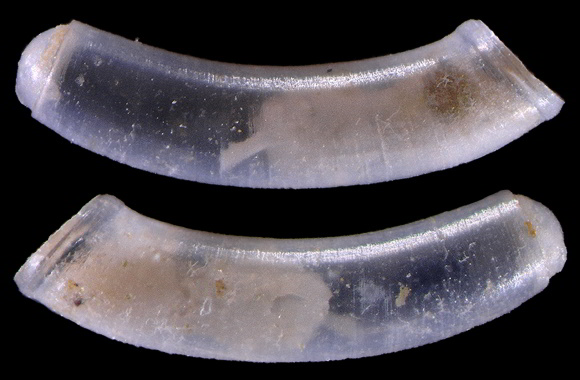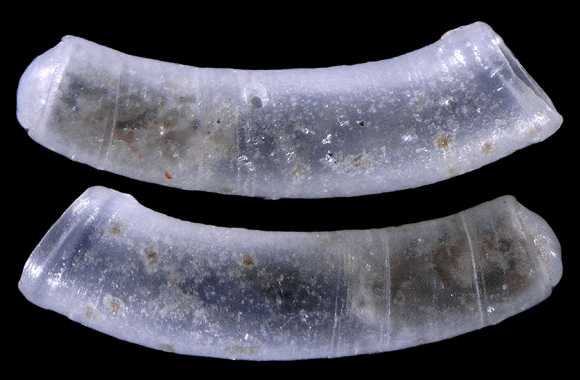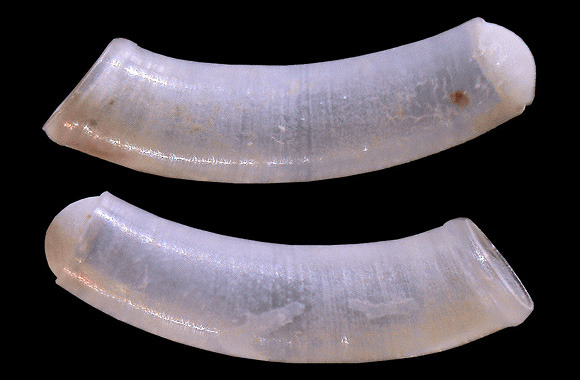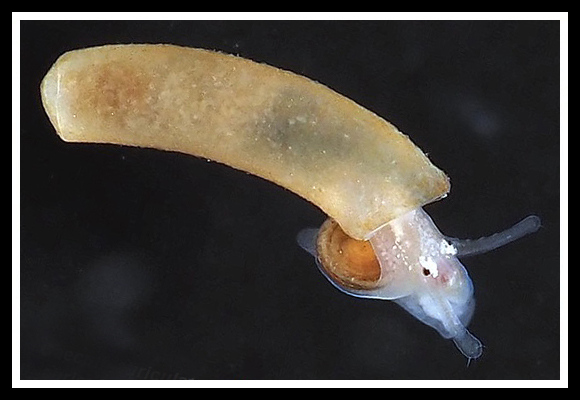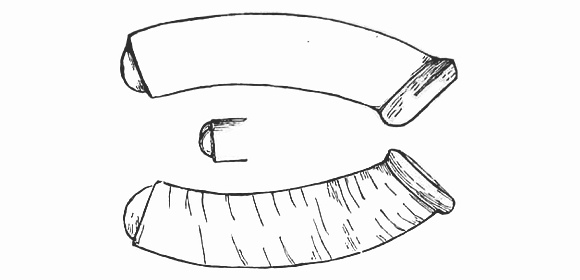
Above, the species in Bucquoy, Dautzenberg & Dollfus: Les mollusques marins du Roussillon vol. I, p.232.
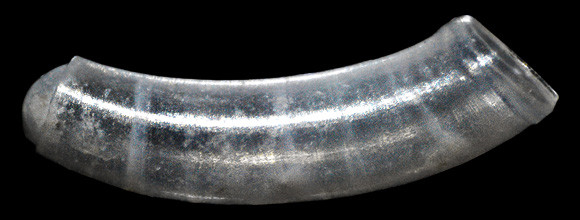
« Testâ irregulariter elevatâ, interdùm latâ, cylindricâ, paulò arcuatâ; subdiaphanâ, nitidâ, minutissime transversim striatâ; aperturam versùs annulo parùm expresso, lato, planato, tumescente; aperturâ vix declivi, haud contractâ, subacutâ. Septo mamillato, seu hemispherico, prominente; apice dextrorso lato, auriculato; margine laterali et dorsali in uno, convexo, semi-circulari… » – de Folin & Périer: Les fonds de la mer… vol. I, Paris 1867-1871, via BHL.
Above and below:
4-6m deep, in grit, Cala d’Alivu, Isola Rossa, NW. Corsica. 1,75mm (subadult, above) to 2-2,25mm (below).
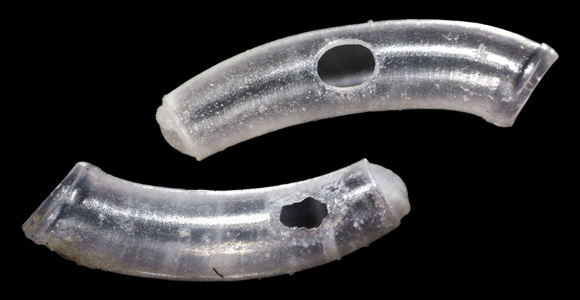
A finger, with a single or a double ring, the first always very close to the aperture. Very weak sculpture of transversal striae. Septum hemispherical and slightly flattened, with an ear-like projection on the dextral side in fully adult specimens.
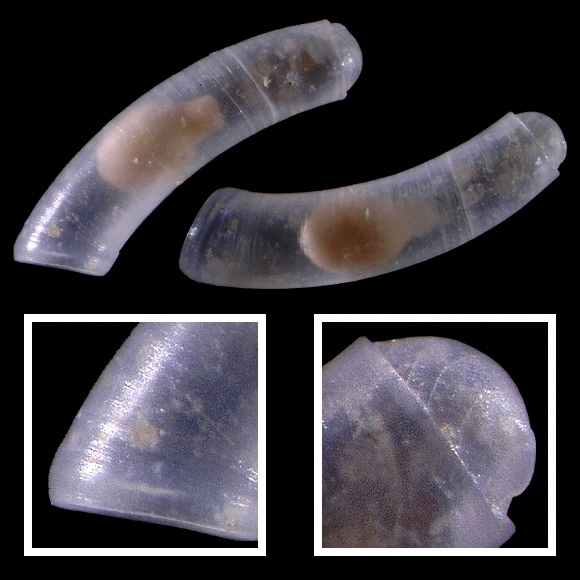
Notice the characteristic septum.
